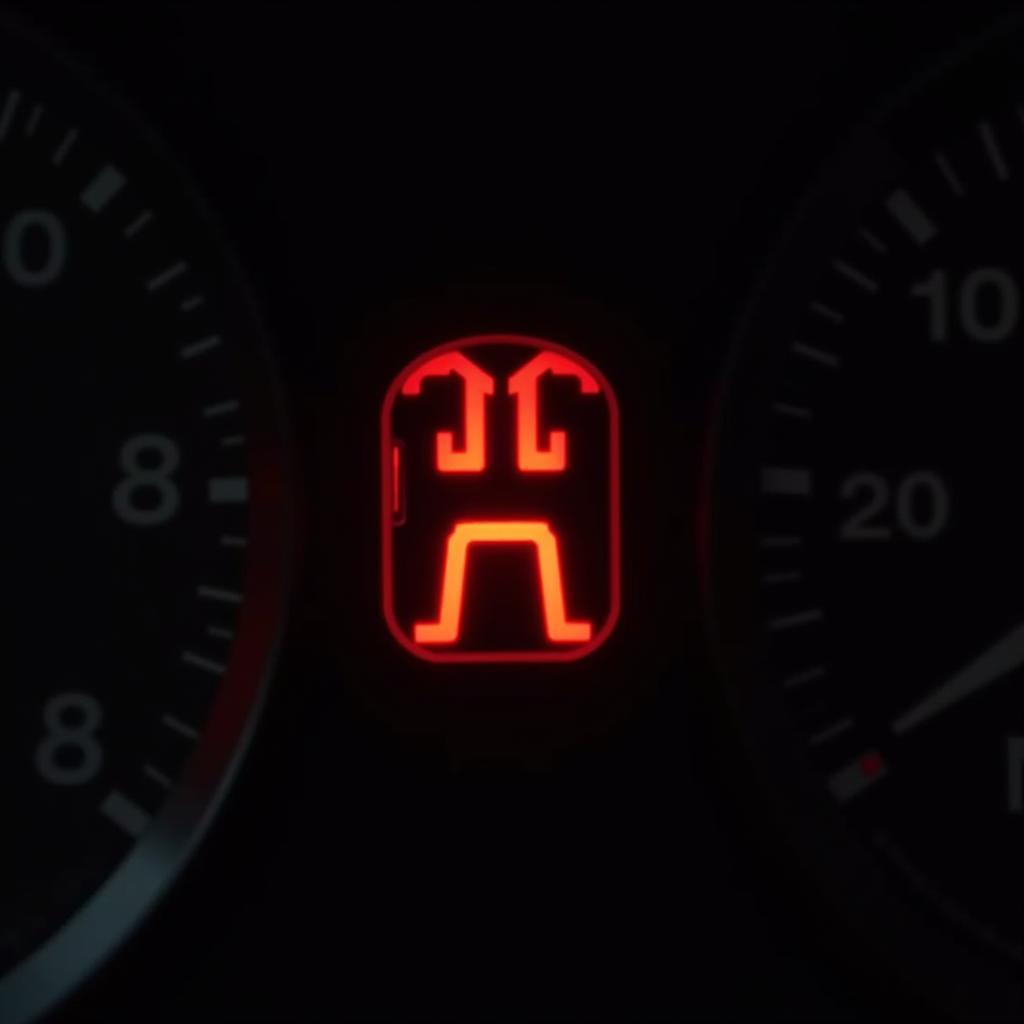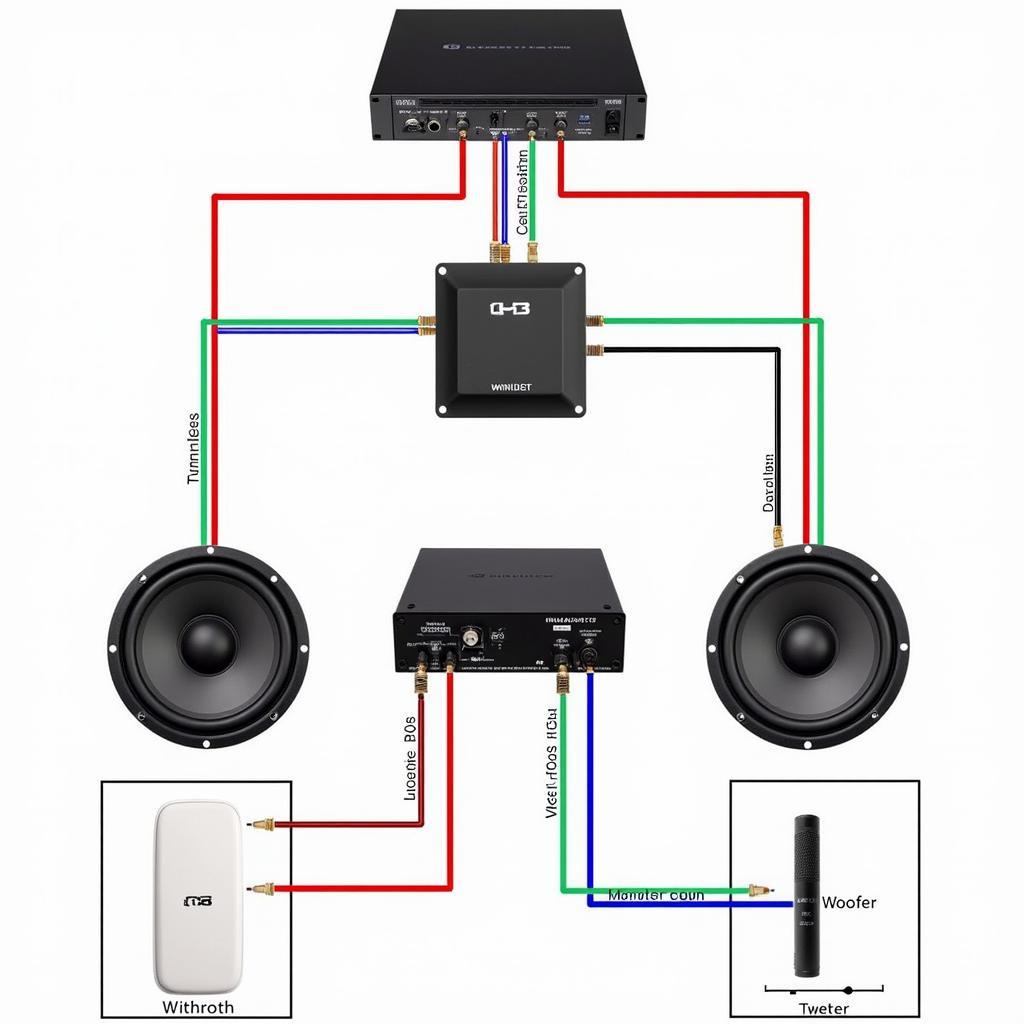Upgrading your car audio system doesn’t always mean replacing the entire setup. You can achieve a significant boost in sound quality by simply installing a car amplifier to your factory radio. This guide will walk you through the process, providing valuable insights and practical tips for a successful installation.
Understanding the Need for a Car Amplifier
Factory car radios often lack the power to drive high-quality speakers to their full potential. This can result in underwhelming audio output, especially at higher volumes. A car amplifier bridges this gap by providing the necessary power to your speakers, resulting in:
- Increased Volume and Clarity: Experience louder, clearer audio without distortion, even at higher volume levels.
- Enhanced Bass Response: Enjoy deeper, more impactful bass frequencies for a richer audio experience.
- Improved Overall Sound Quality: Achieve a balanced and dynamic soundstage with clearer highs, defined mids, and powerful lows.
Before You Begin: Essential Considerations
Compatibility Check
- Check Your Factory Radio: Ensure it has preamp outputs, typically labeled as “RCA” or “Line Out.” These outputs send audio signals to the amplifier.
- Speaker Impedance: Match the impedance of your speakers to the amplifier’s specifications to prevent damage to your audio equipment.
Tools and Materials
- Car Amplifier
- Wiring Kit: This includes power and ground wires, speaker wire, a fuse holder, and RCA cables.
- Wire Strippers/Cutters
- Electrical Tape
- Zip Ties
- Screwdrivers
- Socket Wrench
- Panel Removal Tools
Step-by-Step Installation Guide
1. Disconnecting the Battery
Before you begin any electrical work, disconnect the negative (-) terminal of your car battery as a safety precaution.
2. Mounting the Amplifier
- Choose a Suitable Location: Select a well-ventilated location in your car’s trunk or under a seat.
- Securely Mount the Amplifier: Use screws and the provided mounting bracket to firmly attach the amplifier to your chosen location.
3. Wiring the Amplifier
- Power Wire: Connect the positive (+) power wire to the amplifier’s power terminal and run it to the positive (+) terminal of your car battery through a fuse holder.
- Ground Wire: Connect the ground wire to the amplifier’s ground terminal and securely attach the other end to a metal part of your car’s chassis.
- Remote Turn-On Wire: Connect this wire to the amplifier’s remote terminal. This wire sends a signal from your car radio to turn on the amplifier.
- RCA Cables: Connect the RCA cables from your factory radio’s preamp outputs to the corresponding inputs on the amplifier. If your factory radio lacks RCA outputs, you might need a car audio radio stereo wiring harness 2 pin wire adapter.
- Speaker Wires: Connect the speaker wires from the amplifier’s outputs to the corresponding terminals on your car speakers.
4. Connecting to the Factory Radio
- Identify Speaker Wires: Locate the speaker wires behind your factory radio. These wires typically have color-coded pairs.
- Splicing the Wires: Carefully splice the speaker wires from the amplifier to the factory speaker wires. Use a wire stripper to expose the wire ends and secure the connections with electrical tape.
5. Setting the Gain and Crossover
- Gain Control: Start with the gain control set low and gradually increase it until you achieve the desired volume without distortion.
- Crossover Settings: Adjust the crossover settings to match the frequency range of your speakers. This ensures each speaker receives the appropriate frequencies.
6. Testing and Final Checks
- Reconnect Battery: Reconnect the negative (-) terminal of your car battery.
- Test the System: Power on your car radio and check for audio output from all speakers.
- Check for Distortion: Listen carefully for any distortion at different volume levels.
- Secure Loose Wires: Ensure all wiring connections are secure and properly insulated.
Troubleshooting Common Issues
- No Audio: Check the fuse on the amplifier’s power wire and ensure all connections are secure, especially the remote turn-on wire.
- Distorted Audio: Lower the gain setting on the amplifier. Ensure speaker wires are properly connected and not touching each other.
- Engine Noise: Check the ground connection of the amplifier and ensure it’s securely attached to a clean, bare metal surface on the car’s chassis.
“A common mistake is overlooking the grounding point. A secure ground connection is vital for both audio quality and preventing unwanted noise,” says Jason Parker, a seasoned car audio technician with over 15 years of experience.
Conclusion
Installing a car amp to your factory radio can significantly enhance your car audio experience. By following these steps and adhering to safety precautions, you can enjoy louder, clearer, and more dynamic audio on the road. If you encounter difficulties, don’t hesitate to seek professional assistance from a qualified car audio installer.


